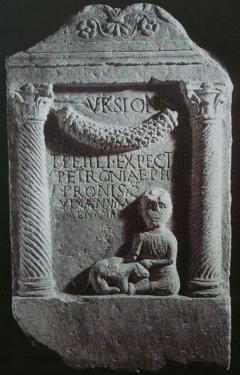Enslaved Childhoods: Redefining Roman Slavery
This three year project, led by Dr Ulrike Roth, explores the role of child slavery in the Roman world, testing the hypothesis that Roman slavery was largely child slavery.
The project is funded by the Leverhulme Trust through a Major Research Fellowship [MRF 2016 -146: ‘The Child Face of Roman Slavery’]. The project start date is 1 September 2017.
Research goals and methods

The project will provide the first comprehensive study of child slavery in the Roman world, covering a period of half a millennium, c. 200 BC to AD 300, and the full geographical extent of the Roman empire across the Mediterranean. Based on extensive quantitative and qualitative study, combining demographic modelling with close source analysis, the project will assess the economic role of child slavery at Rome. The project will also ask whether child slavery was the most widespread form of slave exploitation in the Roman world. Comparison with more recent slave societies will enable meaningful contextualisation of the Roman example, and its historical legacy.
The hypothesis that child slavery was central to the Roman slave system will be tested from three interrelated angles.
First, through quantitative study of the occurrence and economic value of child slaves in the Roman world, to assess the prevalence of child slaves and their labour exploitation in the Roman slave system.
Second, through qualitative study of the evidence for child slaves and child slavery, to provide a detailed and comprehensive overview of the labour tasks undertaken by child slaves.
Third, through cross-cultural comparison of the Roman example with the exploitation of child slaves in other slave societies, especially in the Americas, to identify similarities and differences that will enable a more nuanced understanding of the specifics of child slavery’s context at Rome, and of the role of child slavery within slavery generally.
Project lead
The project is led by Dr Ulrike Roth. The project database is managed by Dr Tatjana Sandon, who is also responsible for communications on the project blog.

